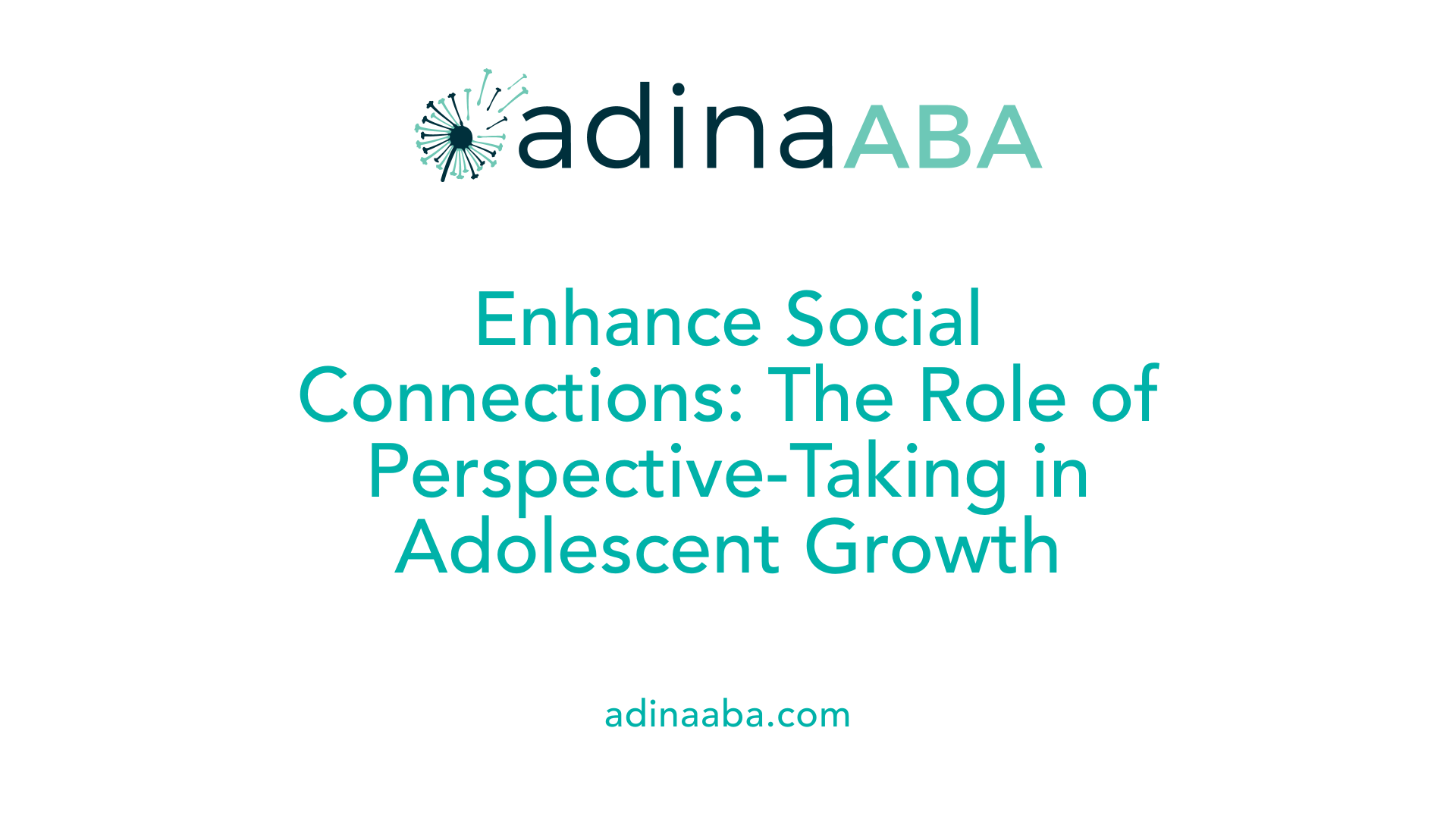How ABA supports perspective-taking in teens

Understanding the Role of ABA in Enhancing Perspective-Taking Skills in Adolescents
As adolescents navigate complex social landscapes, developing robust perspective-taking skills becomes crucial. Applied Behavior Analysis (ABA) has emerged as an effective approach to support teens, especially those with autism spectrum disorder (ASD), in understanding others' feelings, thoughts, and viewpoints. This article explores the strategies, methods, and outcomes of ABA interventions tailored to bolster social cognition during this pivotal developmental stage.
Understanding Perspective-Taking and Its Significance in Adolescence

What is perspective-taking?
Perspective-taking is the ability to perceive and understand another person's thoughts, feelings, and motivations from their point of view. This skill allows individuals to see the world through someone else's eyes and adjust their behavior accordingly. It is foundational to empathy, which involves sharing or understanding another’s emotional state, and is essential for effective social interactions.
This trait develops early in childhood but continues to evolve through adolescence. When children learn to consider their peers' feelings and viewpoints, they become better at building friendships, resolving conflicts, and participating in group activities.
Why is perspective-taking important during adolescence?
During adolescence, exacting social environments, such as school and peer groups, demand a heightened ability to understand others' perspectives. This skill enhances social interactions and emotional intelligence, both of which are critical for forming healthy relationships.
Adolescents who are proficient in perspective-taking tend to demonstrate greater empathy and patience. They are better equipped to interpret social cues, navigate conflicts, and collaborate effectively with diverse groups of people. Developing these skills supports emotional regulation, reduces misunderstandings, and fosters a more inclusive attitude towards peers.
Research underscores that strengthening perspective-taking during these formative years can profoundly impact social competence and overall well-being. Educational and therapeutic interventions that target this skill emphasize its importance in helping teens adapt to complex social dynamics and prepare for adult social roles.
Developmental milestones in children and teens
Children as young as preschool age can grasp basic perspective-taking, understanding that others may see or feel differently than they do. As children grow, their ability to understand the nuances behind others’ thoughts and feelings becomes more sophisticated.
In middle school and beyond, subtle social cues and complex emotional expressions necessitate advanced perspective-taking skills. At this stage, interventions focus on teaching youngsters to recognize and interpret diverse social situations, which promotes self-awareness and social acceptance.
Progress in this area correlates with better social skills and emotional resilience. Programs like Social Thinking and tools adapted from Applied Behavior Analysis emphasize developing these competencies as part of holistic social education.
| Age Range | Typical Development of Perspective-Taking | Supporting Strategies |
|---|---|---|
| Preschool | Basic understanding that others can see or feel differently | Play-based activities, social stories |
| Elementary | Recognize emotional states; understand others' viewpoints | Role-playing, video modeling |
| Middle School | Interpret complex social cues and intentions | Observation, discussion, peer group activities |
| Teenagers | Sophisticated understanding and anticipation of others’ reactions | Real conversations, naturalistic settings |
By fostering perspective-taking during these key stages, educational and therapeutic efforts aim to support social and emotional growth, helping individuals with diverse needs, including those with autism spectrum disorder, achieve meaningful social integration.
Fostering Inclusivity and Respect Through Perspective-Taking Education
Teaching perspective-taking within ABA frameworks not only improves social skills but also promotes respect and understanding for neurodiverse individuals. Emphasizing acceptance alongside skill development creates inclusive environments that value individual differences, leading to healthier and more empathetic social communities.
References
- How Teaching Perspective Taking to Individuals with Autism ...
- Theory of Mind and Perspective Taking - How to ABA
- Why Perspective-Taking and Neurodiversity Acceptance? (Part 2 of ...
- Perspective-Taking in Childhood: Definition and Resources - Cadey
- Building Social Skills in the Teenage Years: How ABA Can Help
- Watch Video - Association for Behavior Analysis International
- Social Perspective Taking - Social Thinking
- Theory of Mind and Perspective Taking - How to ABA
- [PDF] Perspective Taking_NCABA2020
- Ins and Outs of Applied Behavior Analysis (ABA) Intervention in ...
More Resources
Expert Clinicians
Get started today ->






